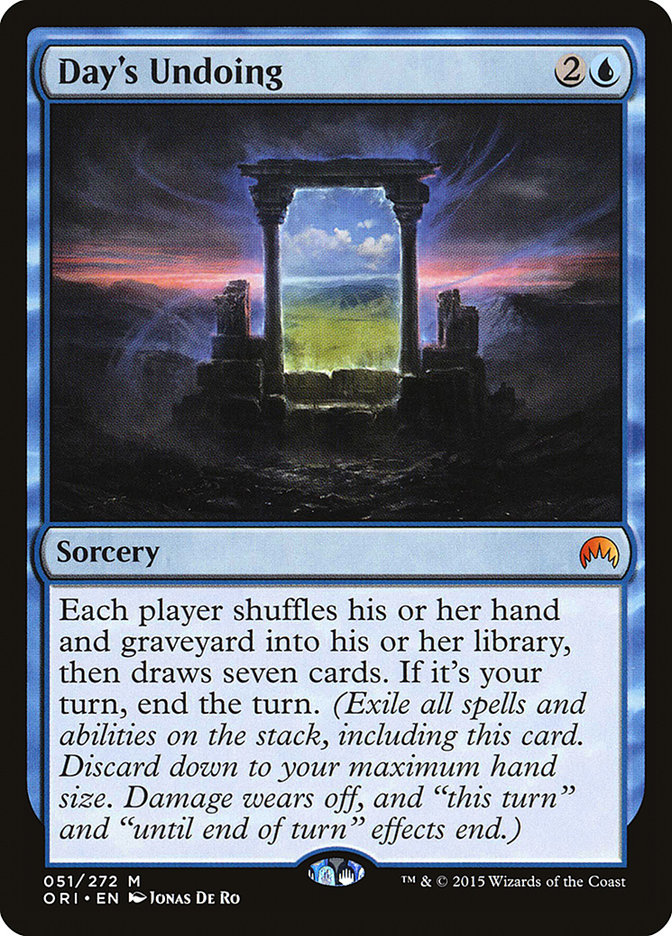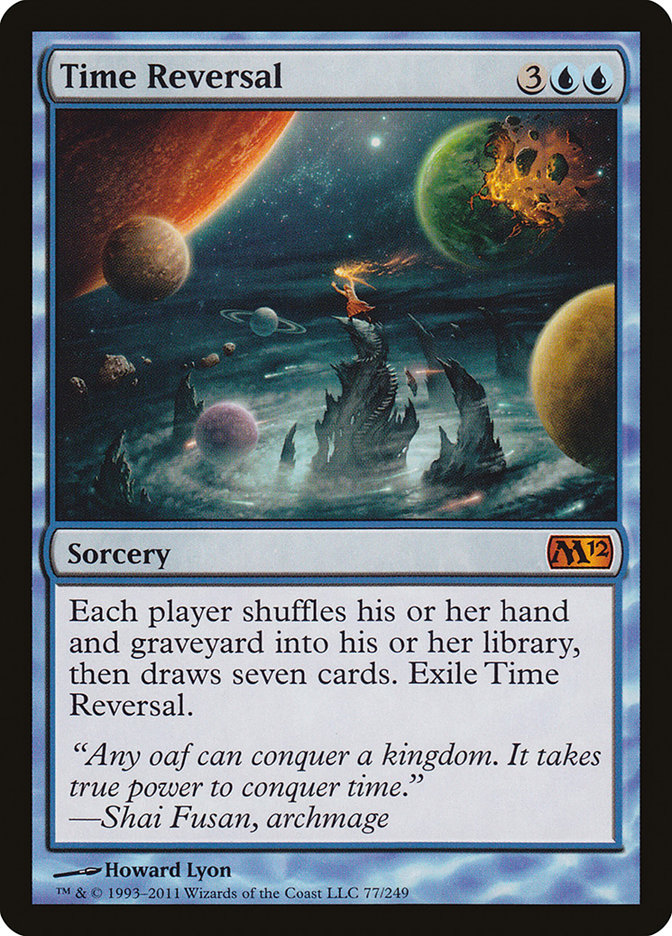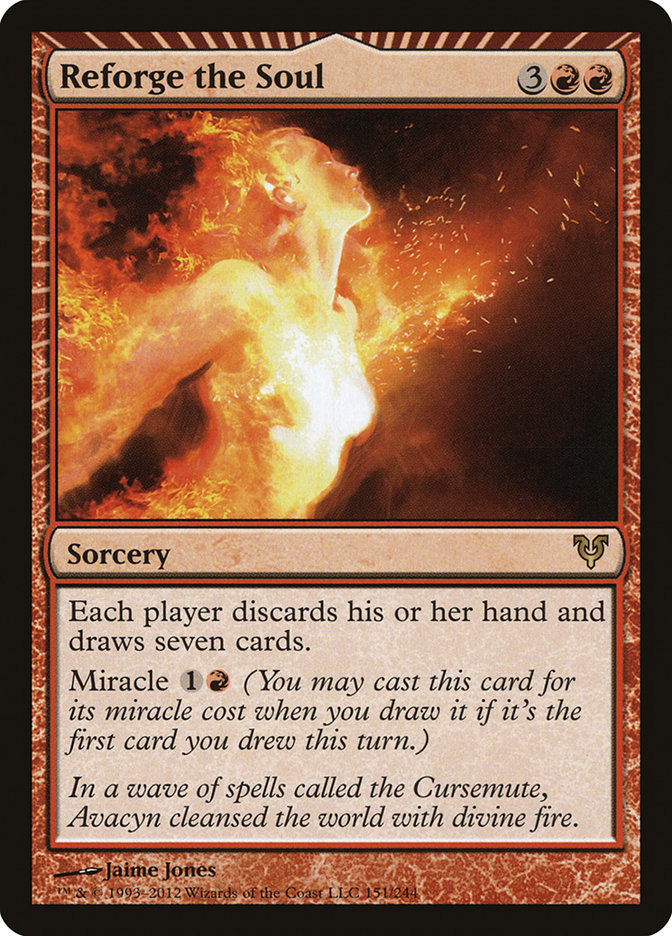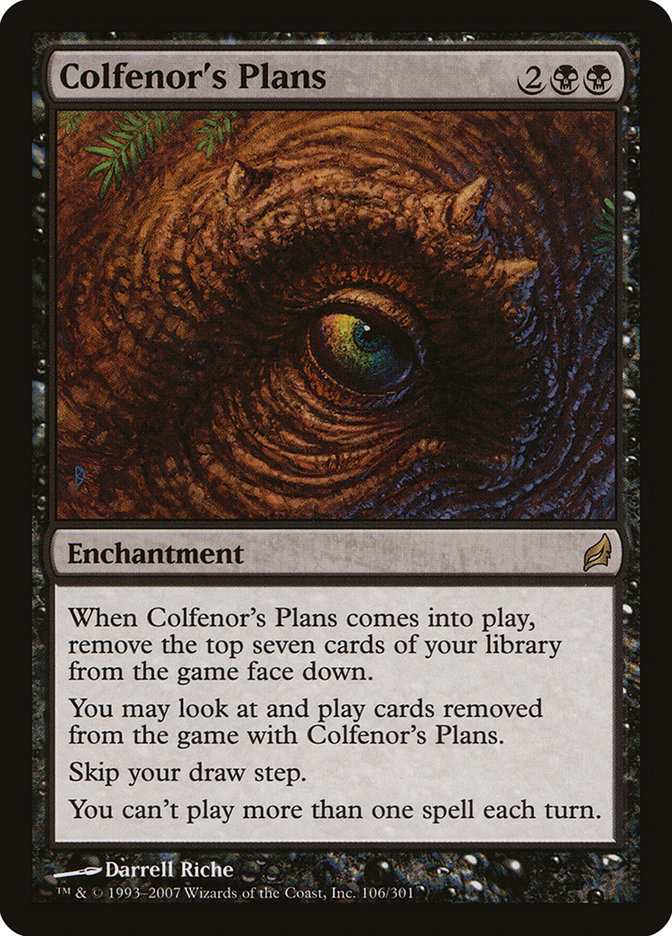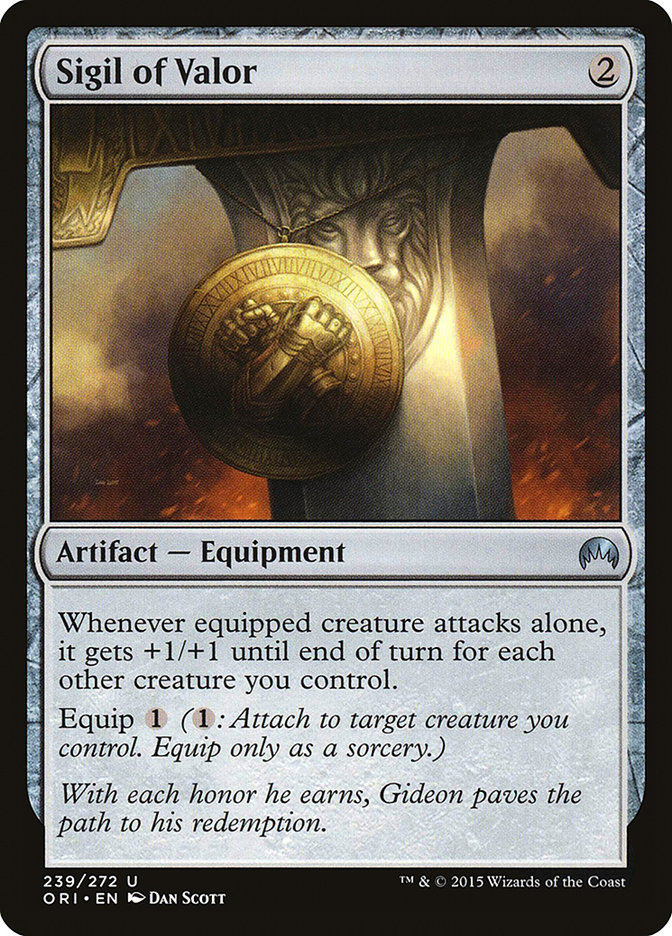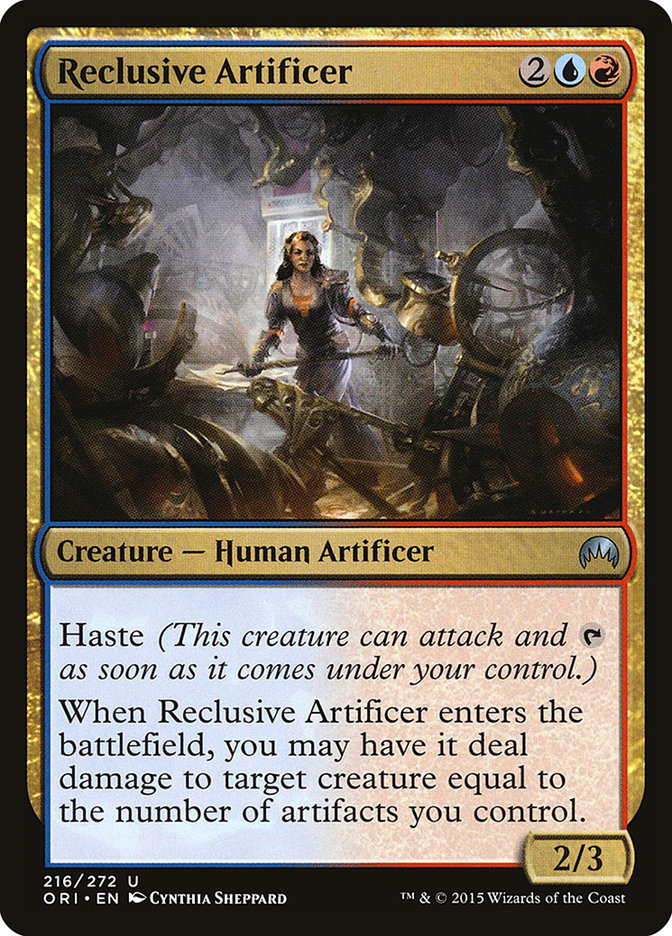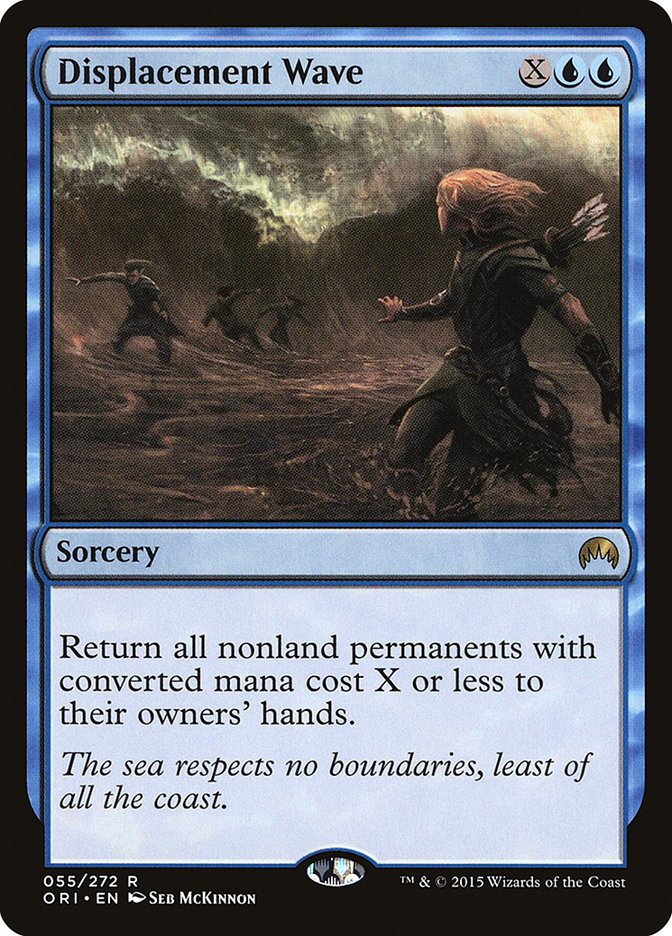This past week was one filled with mild frustration; while fiddling with the brew I planned to share with you today, two other writers here on StarCityGames.com beat me to it, albeit from strikingly different angles. I wish I could write faster; everyone’s sharing all their sweet brews and I can’t get mine in on time! Hashtag writerproblems.
But that’s a great sign; Magic Origins has already built a reputation as a brewer’s paradise, and it’s making a large enough change to a somewhat-stagnant format that the biggest names in Magic are setting aside established decks to go deep in the tank. With a considerably smaller-than-usual number of strictly Limited cards, the set has lots of hard hitters, great role-players, and, as it would see, gems waiting to be found.
One card from Magic Origins that’s yet to be correctly identified is Day’s Undoing.
Timetwister is an insane Magic card. While regarded as potentially the lowest piece of the Power Nine, Timetwister is still unequaled since its original printing. We’ve gotten things like it, that is, drawing seven cards for a low cost and a heavy condition, but many of them have only accomplished part of the effect. Several of them aren’t even the same color as Timetwister.
Day’s Undoing is a two-sided Timetwister with the essential caveat of immediately ending your turn to prevent combo decks from destroying the integrity of, well, every format. This also means you can’t copy it, cast it with Snapcaster Mage (or Jace, Telepath Unbound as it would turn out), and it isn’t profitable to cast it with a hypothetical Quicken, as it does not end their turn.
Alright, so we’ve got a piece of Power Nine that’s been updated for today’s Standard. Now what?
To be honest, I can make a lot of cards “work” in the sense of finding complementary cards and fitting them together in reasonably realistic quantities, testing them against friends, and finding out what works and what doesn’t. But I didn’t even know where to even start with this kind of effect. It’s a sneaky one; it seems insane, but the fact that it ends your turn is absolutely critical.
Lucky for me, a fellow brewer, though hardly a peer, gave me a nudge along the way.
Creatures (24)
- 4 Ornithopter
- 3 Triton Shorestalker
- 1 Stratus Dancer
- 4 Gudul Lurker
- 4 Sidisi's Faithful
- 4 Faerie Miscreant
- 4 Harbinger of the Tides
Lands (19)
Spells (17)
Sideboard

In his Premium review of Blue last week, Patrick Chapin shared a clever mono-blue deck that worked with Day’s Undoing in a way I hadn’t considered.
Timetwister effects have been reprinted in one form or another throughout the history of Magic, but since Alpha and Beta they’ve always gone up in cost to help offset the sheer power of it. Day’s Undoing has the benefit of being an easy three mana, which is likely the absolute lowest you could possibly price this. Patrick’s deck dumped his hand quickly, leveraging low-cost, unblockable creatures as a way to create a semblance of board presence and then casting Day’s Undoing to reload. In a way, Chapin’s deck is a tempo deck; he can play a lot more cards per turn than the average midrange player these days. Combined with low-cost ways to bounce your opponent’s creatures, which will then get shuffled away, you can easily control the board with nifty cards like Sidisi’s Faithful and Harbinger of the Tides. For me, though, I decided to go a bit deeper.
Creatures (24)
Lands (18)
Spells (18)

Admittedly, this is not an initial draft; after goldfishing this deck several dozen times, these creatures, spells, and lands made the cut and lots more got shelved for being too weak or, well, frankly boring. Moreover, my deck was birthed from Patrick’s, so I’ll keep the description short and sweet.
For me, having a cove-load of cheap blue creatures and artifacts was the best way to get out there and most effectively restock with a Day’s Undoing. In this spirit, Ornithopter and Springleaf Drum feature as great plays at any point in the game; remember, your hand is temporary here, so play all the low drops you can. The one-drops were carefully chosen; Gudul Lurker is the best variant of the cheap, unblockable creature, being better than Triton Shorestalker in every situation outside a Merfolk deck. Faerie Miscreant is an investment. Sure, it’s Flying Men the first time, but as you replenish your hand, you are much more likely to play a 1/1 flyer that replaces itself for just one mana. Once you’ve got one out, it’s better than Elvish Visionary in terms of efficiency; it’s tougher to block, too. Dakra Mystic has been a card for which I’ve been trying to find a home since last May, and although I’ve only really succeeded once, this one is another slam dunk. No one likes to spend mana to give another player a card, but if you just have to hit your land drop to cast a nice Day’s Undoing, who cares? They’re shuffling it back anyway! Hypnotic Siren over the Shorestalker is intentional. Because Springleaf Drum is basically a land in this deck thanks to twenty cheap creatures, Bestowing this creature is not out of the realm of possibility. A fresh grip gives you more Springleaf Drums, and as you flood the board with creatures happy to beat those Drums you’ll get to seven mana faster than you think. Another out-of-place card is Master of Waves. It might seem too expensive, but because every land comes into play untapped and just a one-drop, a Drum, and on-time lands is enough, you can easily play your Master on turn three. Even if it’s not too big, Master gets better and better the earlier you play it.
The spell category matches Patrick’s more closely, but I removed his bounce spells and tricky stuff for insurance in the form of Swan Song. Like Dakra Mystic, you’re sometimes giving your opponent a better deal than yourself. But here, with so many creatures ready to attack, one little 2/2 is a fine price to pay for a hard counter for Courser of Kruphix, Bile Blight, and Thoughtseize. What I did do differently was include Sigil of Valor.
Having a bunch of 1/1 creatures is all well and good, but the fact that they don’t have haste is a problem when you’re trying to keep pressure on. For the turn after you cast Day’s Undoing and you swarm the battlefield with Ornithopters and one-drop 1/1s, Sigil of Valor still lets you leverage your creature count in combat even though you just dumped them all in. It’s always a bit risky to attack with just one creature; heck, the format just gave us a hard answer for that situation. Nonetheless, you can still give your Master of Waves tokens relevance on a clogged board by equipping one of your flying or unblockable creatures with a Sigil. If your board is all Ornithopters, it also means you’re still able to attack for damage.
Eighteen lands is not a lot, but it’s exactly right. We only have one color, and all the lands come into play untapped. With the number of one-drops in the deck, too many Darksteel Citadel could be a problem, but two is perfect.
This deck is both explosive and consistent. It’s somewhat difficult to interact with, as it combines eight attack-ready targets for Ensoul Artifact on turn two with the wide board state characteristic of Mono-Blue Devotion. Patrick’s deck is likely more realistic for competitive formats, as that’s what he’s good at, but I’d entreat him to try this or a variation thereof sometime to see how it stacks up. Day’s Undoing gives mono-blue Ensoul Artifact a new breath of life, and elements of Mono-Blue Devotion can help make this a versatile, exciting deck for anyone who loves to cast spells for zero mana and draw a whole lot of cards.
After fiddling with Patrick’s deck, though, my mind started to open up a bit. If Day’s Undoing is about casting lots of cheap cards to outpace a slower opponent, what else can we manage?
While we’re talking about artifacts, let’s look at this Artificer for a moment. That trigger is awesome, but how many artifacts is enough to make this playable? Well, em>all of them, of course.
Creatures (24)
- 4 Ornithopter
- 4 Keeper of the Lens
- 4 Hangarback Walker
- 4 Bonded Construct
- 4 Chief of the Foundry
- 4 Reclusive Artificer
Lands (20)
Spells (16)

I think fifteen-playset decks look a bit lazy sometimes, but I can’t think of anything I want less of.
Here you have the cheapest part of the core that made up the Grey Army deck I shared a couple weeks ago, reserving only those closest to the magic mana cost of zero. Chief of the Foundry makes all of my low-cost vanilla creatures a little less embarrassing and, as a side note, it makes Hangarback Walker a Memnite, if you want, which is important for the whole empty-your-hand game we’re playing. Like with the previous list, Springleaf Drum makes four-drop Reclusive Artificer a little less intimidating. Shrapnel Blast gets better when it’s not card disadvantage as badly anymore. Combined with the one-two punch of Ensoul Artifact and Shrapnel Blast, only the strongest decks can survive the punishment you’re dealing out.
This is cool and all, but what if we wanted to go really deep?
Altar of the Brood is another great card for the brewing world as it lets you achieve a fun, alternate win condition by just playing Magic. Lands, creatures, and tokens all trigger the Brood, so unlike many niche brew cards, it’s very much a “fire-and-forget” kind of spell.
Day’s Undoing helps us draw lots of cards, yes, but it also does something diametrically opposed to the mill strategy; it builds in a Reminisce for both you and your opponent. Hmm…
Got it! Saved it! And hey, you can exile their graveyard and, when you cast Day’s Undoing, you’ll shuffle the Crypt back in, giving you a better chance to draw it than you would have in your opening hand (as you’ll have permanents in play that won’t interfere with your chances to draw it.)
Tormod’s Crypt is free, thus it works great with the Altar. How many free spells are there, and how can we make it so that zero-cost spells that do nothing are good enough to collectively do something?
Creatures (16)
Lands (16)
Spells (28)

This looks stupid. This looks really stupid. Literally only like twelve cards in this deck do anything at all, but I don’t care. We gonna have some fun.
Ornithopter, its little free self, is so darn versatile. Who knew a 0/2 flyer for zero would be so cool? In consideration of another color, I wanted to skip a turn as frequently as possible, so adding Elvish Mystic helps us make that happen. We’re aiming for speed and consistency, so Faerie Miscreant and Elvish Visionary are great blockers who (often) replace themselves.
Four Altars is necessary, as you might expect. The nice thing is, the longer the game goes, the better these get. You’ll draw more as the game progresses, and even if you have to cast Day’s Undoing and neutralize your efforts, you’ll have built a stronger platform to come back, both because of a fresh hand and more Altars in play. Then there are twelve zero-cost artifacts. Briber’s Purse can help keep a nasty attacker away for the one turn you need it, Astral Cornucopia can hold mana as a battery for the more critical late-game turns, and Tormod’s Crypt is your “Bank!” if you were playing The Weakest Link instead of Magic. Too old? Too British? Maybe both. Springleaf Drum with sixteen creatures is still enough to make it a whole-grain land substitute.
That leaves the ringer.
Remember how Altar of the Brood likes permanents to come into play? What if all the permanents you play cost nearly nothing?
Displacement Wave is already a neat trick for blue to get rid of tokens. UU to undo Dragon Fodder, Hordeling Outburst, Raise the Alarm, or even the good part of a Hornet Nest is respectable, but in this deck Displacement Wave looks like another combo piece.
So play your hand, dig for your Day’s Undoing, rinse and repeat. Bear in mind they’ll be drawing seven fresh cards each time, making their library smaller and smaller each time. You can cast Displacement Wave for a lot using Elvish Mystic, Springleaf Drum, and Astral Cornucopia as your “batteries,” wiping their board and giving you the chance you need to recast your Altars and play more free stuff. Bye bye, library!
With a little bit of elbow grease, Day’s Undoing could be one of the premier cards in the format. Cheap cards with powerful, efficient, yet conditional effects are known to warp Magic. Just make sure you’re on the right side of the wave!
The dawn of this format is underway. Maybe there’s still time to do some undoing. What do you think?

